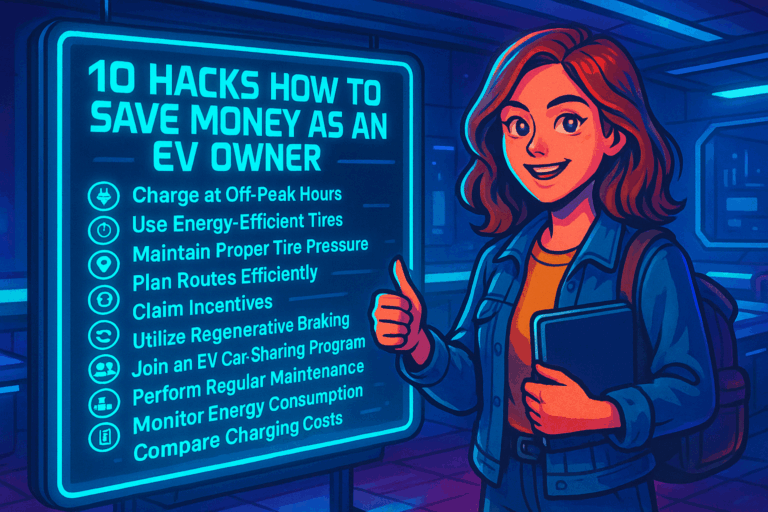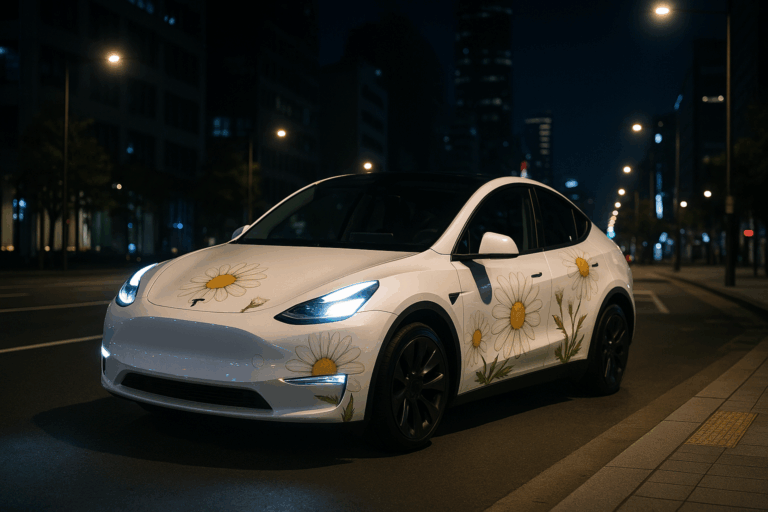Tata Motors Unleashes ₹350 Billion EV Blitz to Electrify India’s Roads by 2030
Mumbai | June 2025 —
In a bold move that signals India’s EV transition entering a high-voltage phase, Tata Motors has announced a staggering ₹350 billion (approx. $4.1 billion) investment over the next five years to turbocharge its electric vehicle operations. The plan? Expand its EV portfolio, ramp up local battery production, and prepare for a new wave of price-conscious and tech-forward Indian consumers.
The Mumbai-based automotive giant—already India’s top-selling EV maker—is aiming to nearly double its electric lineup by 2030, aligning itself closely with the national goal of 30% EV penetration in new car sales by the end of the decade.

The announcement, made at a closed-door investor roundtable in Pune and later confirmed by company executives, could mark India’s most ambitious EV investment by a homegrown automaker to date.
🔋 A Massive Charge for Tata’s EV Ambitions
“This investment is not just about more cars—it’s about creating a full-stack EV ecosystem that’s made in India, for India, and eventually, the world,” said Shailesh Chandra, Managing Director of Tata Motors Passenger Vehicles and Tata Passenger Electric Mobility, during the official press briefing.
Tata’s EV arm currently commands over 70% market share in India’s electric passenger vehicle segment. But now, it’s eyeing much more: a full spectrum of products, from compact urban runabouts to premium SUVs and fleet-oriented vehicles—all fully electric, fully localized.
Key components of the investment plan include:
- New product development: Doubling the current EV lineup from five to around 10-12 models by 2030.
- EV-specific platforms: Rolling out new scalable architectures such as Gen-3 EV platform, purpose-built for high range, fast charging, and global export compatibility.
- Battery innovation and localization: Expanding local cell manufacturing through Tata Agratas Energy Storage, which is setting up a 20 GWh gigafactory in Sanand, Gujarat.
- Charging infra and software: Partnering with Tata Power for faster EV charging rollout and enhancing Tata’s proprietary connected-car platform, ZConnect.
🇮🇳 India’s 2030 Goal: 30% EV Sales—Tata Says “Challenge Accepted”
India’s target—set by NITI Aayog and endorsed by the Ministry of Heavy Industries—is to achieve 30% electric vehicle sales by 2030 in the passenger segment. As of early 2025, EVs make up just 2.5% of all car sales in India, a number that has doubled since 2023 but still lags behind countries like China (30%) and the UK (16%).
Tata’s move is seen as a direct accelerator of this target.
“Tata Motors’ ₹350 billion investment is not just a company-level bet; it’s a national-level push,” said Dr. Anjali Verma, policy lead at the India Energy Storage Alliance. “It sends a message that India is no longer waiting for global EVs to trickle in—it is building them at scale, at home.”
🚗 From Nexon to Curvv to Punch EV—And Beyond
Tata’s EV lineup has expanded rapidly over the past two years. What started with the Tata Nexon EV has grown into a five-model portfolio including Tigor EV, Tiago EV, Punch EV, and the design-forward Curvv EV.
According to internal sources, Tata plans to introduce several new models, including:
- Sierra EV: A reborn icon, expected in 2026 with a long-range AWD setup and a premium price tag.
- Harrier EV: Positioned as a rival to MG ZS EV and Hyundai Kona Electric.
- Altroz EV: A mass-segment premium hatch.
- New Gen-City EV: Sub-₹8 lakh city commuter car aimed at young urban buyers.
Tata insiders also hinted at potential launches in the electric MPV and last-mile cargo segments—areas expected to explode in India’s tier-2 and tier-3 cities.
🏭 Batteries, Not Just Bodies: The Rise of Tata Agratas
Tata Motors is not going at it alone. The company is now deeply integrated within the Tata Group’s clean-tech strategy.
A cornerstone of this plan is Tata Agratas Energy Storage, the Group’s battery cell arm, which is already constructing a gigafactory in Gujarat capable of producing up to 20 GWh annually by 2027. This will reduce India’s dependency on Chinese battery imports, cut costs, and make EVs more affordable.
“India’s EV game won’t be won with imports,” said Nirmal Kalra, Senior VP at Tata Sons’ strategy division. “It’ll be won when batteries, semiconductors, and software are all made in India. That’s our real moat.”
🔌 Infrastructure + Software = The Tata Stack
One of Tata’s advantages is its ability to leverage other group companies to build a complete EV stack.
- Tata Power is building a network of public fast chargers, with a target of 25,000 stations by 2030.
- Tata Elxsi and TCS are working on intelligent mobility solutions, including predictive maintenance, in-car voice assistants, and advanced energy management systems.
- Tata Chemicals is exploring local cathode and anode material production to reduce the overall battery pack cost.
This creates a vertically integrated advantage that foreign automakers can’t replicate easily. It also positions Tata as an EV pioneer with control over the entire lifecycle—from raw materials to user experience.
🌍 Global Aspirations, Local Foundations
While Tata’s current EV sales are largely domestic, company officials have made no secret of their export ambitions. The Gen-3 platform is being built with European safety norms and global range benchmarks in mind.
Tata has already sent pilot EV batches to Nepal, Bhutan, and parts of Southeast Asia. It’s now evaluating strategic assembly partnerships in Africa and Middle East.
“India can be a global hub for affordable EVs,” said Rajendra Petkar, CTO at Tata Motors. “We want to be the ones who make that dream real—not just for India, but for emerging markets worldwide.”
💡 Challenges on the Road Ahead
Despite the excitement, industry veterans caution that hurdles remain:
- Charging anxiety persists, especially outside major metros.
- Raw material volatility, particularly lithium and cobalt, may spike prices unless local alternatives or recycling mature.
- Government subsidies like FAME-II are expected to phase out in coming years, putting pressure on automakers to hit profitability on their own.
Still, Tata’s commitment is seen as a vote of confidence that India’s EV sector is moving from pilot mode to mainstream adoption.
📈 Market Response: Stocks Jump, Analysts Bullish
Following the announcement, Tata Motors’ shares jumped 3.8% on NSE, with analysts issuing buy ratings and raising long-term price targets.
“This move cements Tata as the long-term EV leader in India,” said a report from ICICI Securities, calling it a “classic blend of industrial muscle and startup energy.”
Investors are also bullish on Tata Power, Tata Elxsi, and other group companies expected to benefit from this ecosystem-wide expansion.
🛣️ Final Word: India’s EV Moment Is Now—And Tata Is Driving It
Tata Motors’ ₹350 billion EV investment is more than just a business play—it’s a defining statement about India’s industrial self-confidence in the clean mobility era.
Where once India lagged behind the West and China, it is now charting its own course. And at the center of that story is a century-old brand that’s reinventing itself at lightning speed.
From the factory floors of Pune and Sanand to the charging stations of Kochi and Kolkata, Tata is betting big on a greener tomorrow—and bringing India along for the ride.






